Text
Partly developed circumscribed halo with circumzenithal arc.
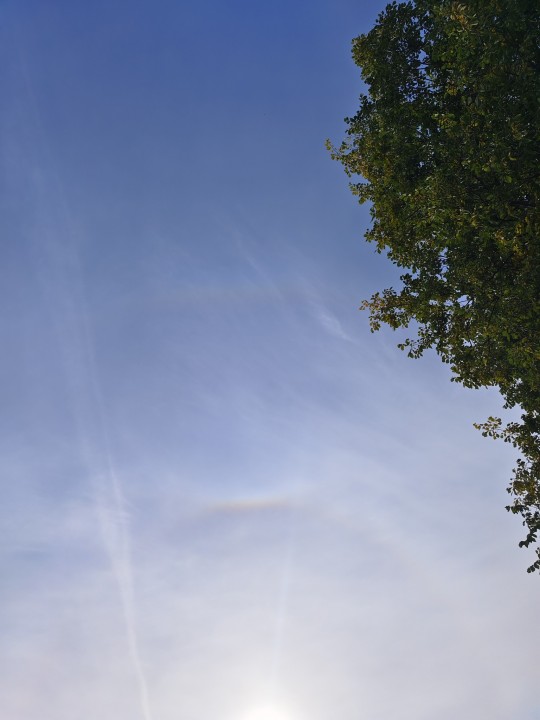

1 note
·
View note
Text
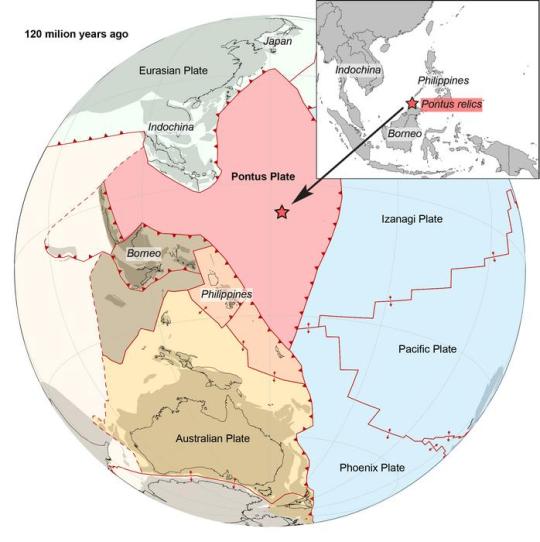
Plate tectonic surprise: Utrecht geologist unexpectedly finds remnants of a lost mega-plate
Utrecht University geologist Suzanna van de Lagemaat has reconstructed a massive and previously unknown tectonic plate that was once one-quarter the size of the Pacific Ocean. Her colleagues in Utrecht had predicted its existence over 10 years ago based on fragments of old tectonic plates found deep in the Earth’s mantle. Van de Lagemaat reconstructed lost plates through field research and detailed investigations of the mountain belts of Japan, Borneo, the Philippines, New Guinea, and New Zealand. To her surprise, she found that oceanic remnants on northern Borneo must have belonged to the long-suspected plate, which scientists have named Pontus. She has now reconstructed the entire plate in its full glory. Suzanna van de Lagemaat will defend her dissertation on this plate tectonics puzzle at Utrecht University on Friday, October 13.
Understanding the movements of the tectonic plates that make up the earth’s rigid outer shell is essential to understand the planet’s geological history. The movements of these plates strongly influenced how the planet’s paleogeography and climate have changed over time, and even where to find rare metals. But large oceanic plates from the geological past have since disappeared into the earth’s mantle by means of subduction. They have left behind only fragments of rock hidden in mountain belts. Van de Lagemaat studied the planet’s most complicated plate tectonic region: the area around the Philippines. “The Philippines is located at a complex junction of different plate systems. The region almost entirely consists of oceanic crust, but some pieces are raised above sea level, and show rocks of very different ages.”
Reconstruction
Using geological data, Van de Lagemaat first reconstructed the movements of the current plates in the region between Japan and New Zealand. That revealed how large the area was of plates that must have disappeared in the current western Pacific region. “We also conducted field work on northern Borneo, where we found the most important piece of the puzzle. We thought we were dealing with relicts of a lost plate that we already knew about. But our magnetic lab research on those rocks indicated that our finds were originally from much farther north, and had to be remnants of a different, previously unknown plate.” But the important realisation was yet to come. “11 years ago, we thought that the remnants of Pontus might lie in northern Japan, but we’d since refuted that theory”, explains Douwe van Hinsbergen, Van de Lagemaat’s PhD supervisor. “It was only after Suzanna had systematically reconstructed half of the ‘Ring of Fire’ mountain belts from Japan, through New Guinea, to New Zealand that the proposed Pontus plate revealed itself, and it included the rocks we studied on Borneo.”
Relics
The relics of Pontus are not only located on northern Borneo, but also on Palawan, an island in the Western Philippines, and in the South China Sea. Van de Lagemaat’s research also showed that a single coherent plate tectonic system stretched from southern Japan to New Zealand, and it must have existed for at least 150 million years. That is also a new discovery in the field.
Waves
The previous predictions of the existence of Pontus were made possible because a subducted plate leaves behind traces when it ‘sinks’ into the earth’s mantle: zones in the mantle with anomalous temperatures or compositions. These anomalies can be observed when seismographs pick up signals from earthquakes. Earthquakes send waves through Earth’s interior, and when they travel through an anomaly, such as a fragment from an old plate, the anomaly produces a disruption of the signal. Geologists can trace these disruptions to the existence of phenomena in the mantle, such as fragments of tectonic plates. That allows them to look 300 million years into the past; older plate fragments have ‘dissolved’ at the boundary between the mantle and the core. The study from 11 years ago showed that a large subduction zone must have run through the western paleo-Pacific Ocean, which separated the known Pacific plates in the east from the hypothetical Pontus plate in the west. This hypothesis has now been independently demonstrated by Van de Lagemaat’s research.
IMAGE....The Pontus oceanic plate that was reconstructed by Suzanna van de Lagemaat: its location in the paleo-Pacific ocean 120 million years ago, and its present relicts. An earlier study showed that a large subduction zone must have run through the western paleo-Pacific Ocean, which separated the known Pacific plates in the east from a hypothetical Pontus plate in the west. This hypothesis has now been independently demonstrated by Van de Lagemaat’s research. CREDIT Suzanna van de Lagemaat, Utrecht University
95 notes
·
View notes
Text


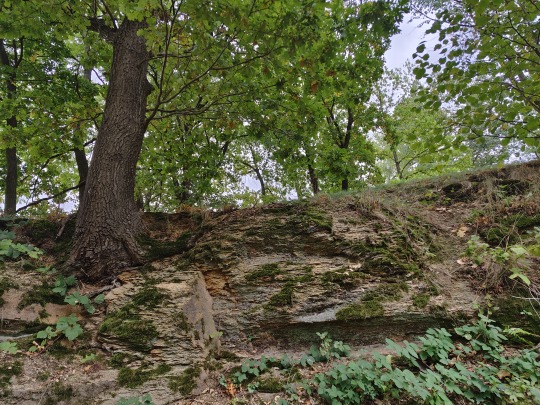

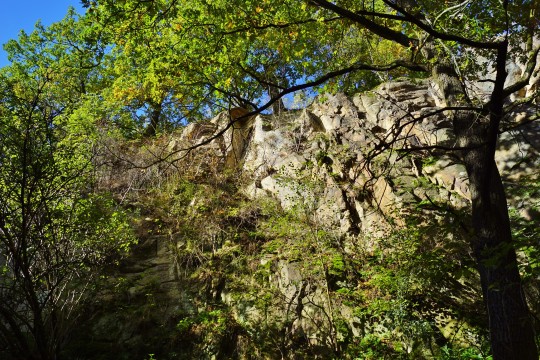

Bagieniec village lies on the line of the Tertiary Bagieniec-Paszowice fault, which is the north-western border of the Strzegom - Sobótka granite massif. Strzelnica hill, towering over the village, is the raised wing of this fault, built of the Paleozoic granite intrusion of Carboniferous age. The depressed part in which Bagieniec is located belongs to the Roztoka-Mokrzeszów Graben, filled with sediments of the Tertiary and Quaternary period.

The outcrops of Strzelnica hill show granite rocks called the Strzegom granite and products of their weathering.
#geology#lower silesia#geotourism#poland#geologia#geology of poland#carboniferous#granite#Równina świdnicka
17 notes
·
View notes
Text
The sunken lane (wąwóz drogowy, holweg), at the north-western edge of Samborowiczki village, made in Pleistocene loess deposits. It runs in a depth of up to 5 meters, with characteristic, very steep walls with an inclination reaching 80°. Loess deposits of the area lie on much older paleozoic and proterozoic rocks, building the majority of the Strzelińskie Hills.

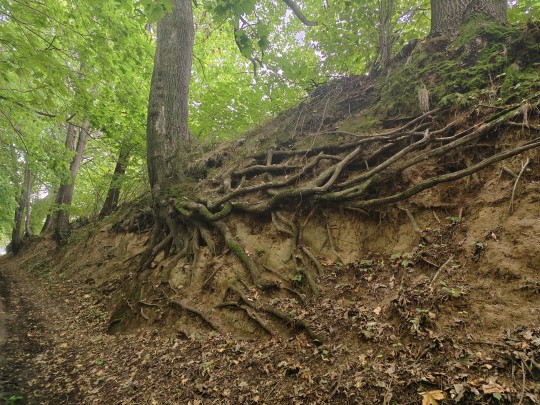
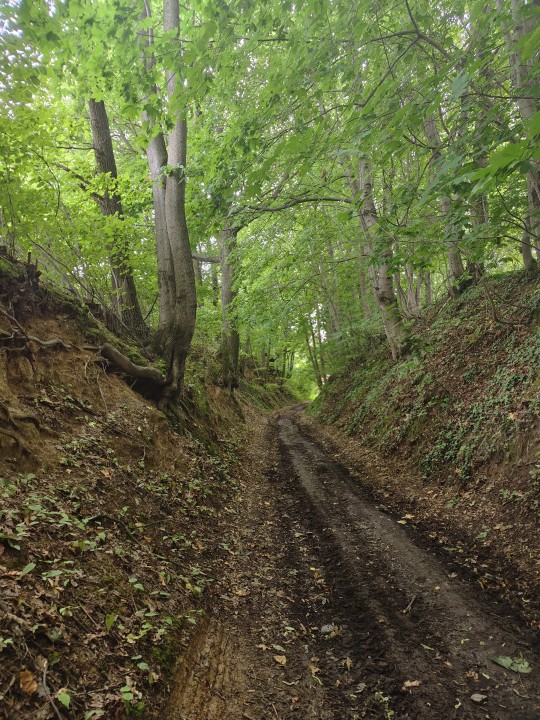

#geology#lower silesia#geotourism#poland#geologia#geology of poland#loess#less#wzgórza strzelińskie#Samborowiczki
6 notes
·
View notes
Text

Armitage & Kylo
39 notes
·
View notes
Text
Paleontologists working in northern Alaska have discovered a tiny fossil mammal that thrived in what may have been among the coldest conditions on Earth about 73 million years ago.
The researchers, led by Jaelyn Eberle of the University of Colorado Boulder, described the Late Cretaceous animal in a study published this month in the Journal of Systematic Palaeontology.
They gave it the scientific name Sikuomys mikros—from "Siku," an Iñupiaq word for "ice," and "mys" and "mikros," the Greek words for "mouse" and "little."
It's a fitting title. While the little ice mouse wasn't actually a mouse, instead belonging to a now-extinct family of mammals called Gypsonictopidae, it was certainly tiny. The furry critter may have looked a bit like a modern-day shrew and weighed an estimated 11 grams, or less than an empty aluminum soda can.
Continue Reading.
#Gypsonictopidae#Leptictida#Sikuomys mikros#why all popular articles call it a mouse without quotation marks?#it's infuriating
167 notes
·
View notes
Text
It's official! Skalickie Skałki (Skalice Rocks) confirmed as the oldest rock outcrop in entire Poland. Made of sillimanite gneisses they were said to be even a billion years old, but current estimations are closer to 600 mln yrs.


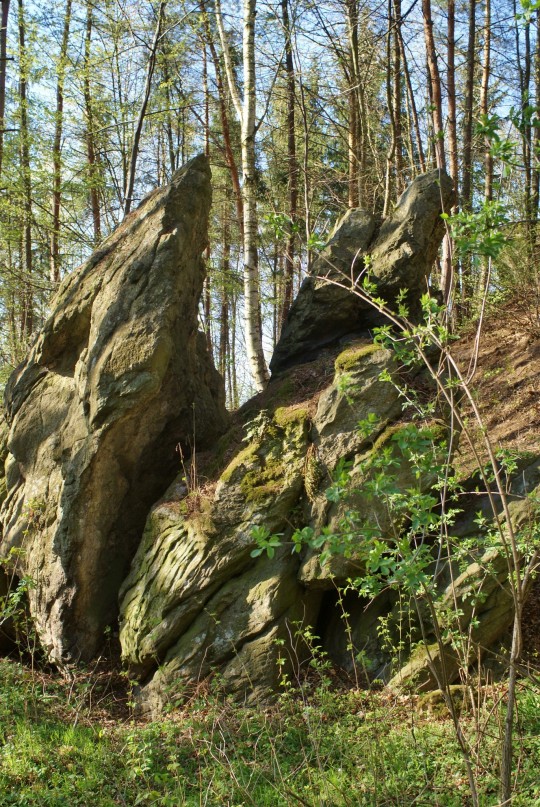
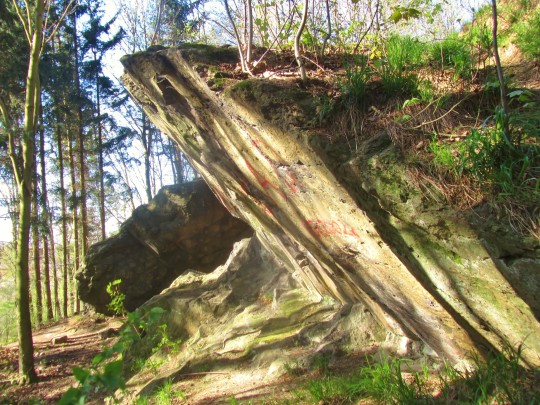

#My favourite spot#Skalice#wzgórza strzelińskie#lower silesia#geology#geotourism#geologia#poland#sudetes#geology of poland#my photography#rocks#sillimanite gneiss#proterozoic
296 notes
·
View notes
Text
Siblings or dating?
Nah, just uncle and niece who are married 😜

57 notes
·
View notes
Text
Look whom I found at the border of Cienkowice village.
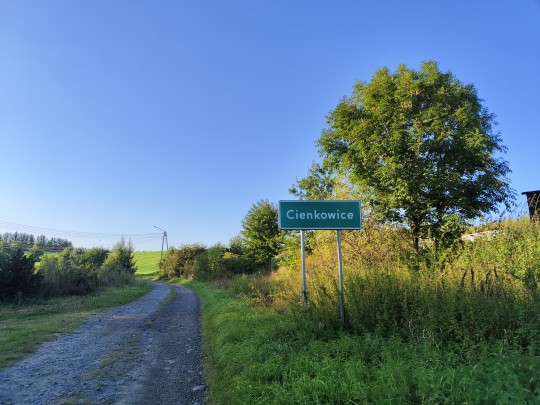
2 notes
·
View notes
Text
This path is temporarily unavailable due to the landslide.

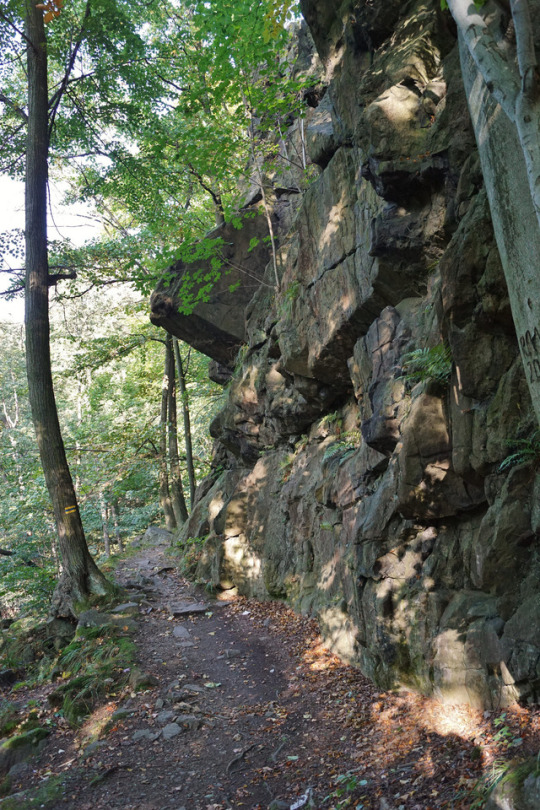


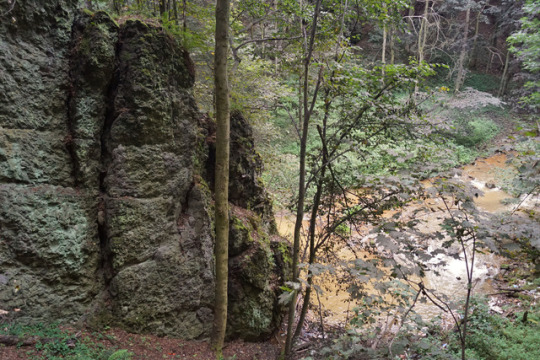
Książ Landscape Park. In the canion of Pełcznica river.
6 notes
·
View notes
Text
I had a dream last night that I was inside the Oppenheimer movie (I didn't watch it yet, nor I'm sure I want to) and I found C. Murphy heavily gesticulating which I didn't like at all and started shouting "Dwight Schultz was better! Dwight Schultz was much better!"
4 notes
·
View notes
Text
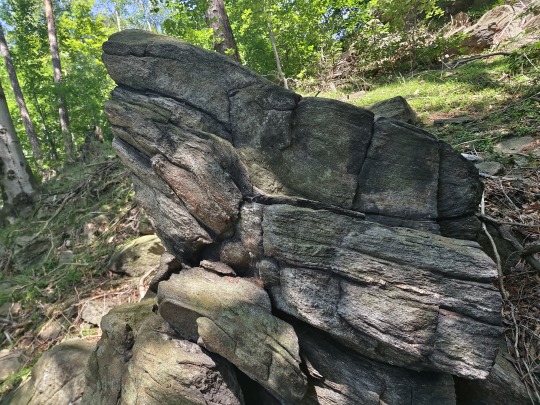
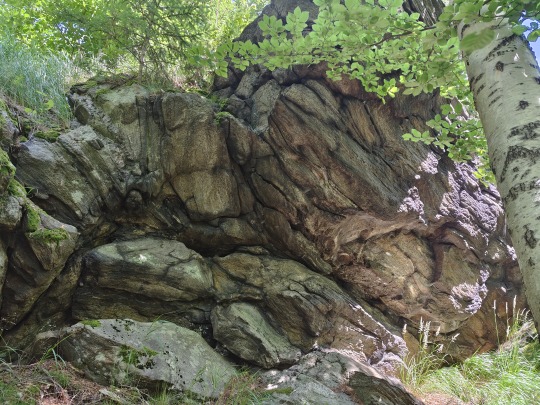

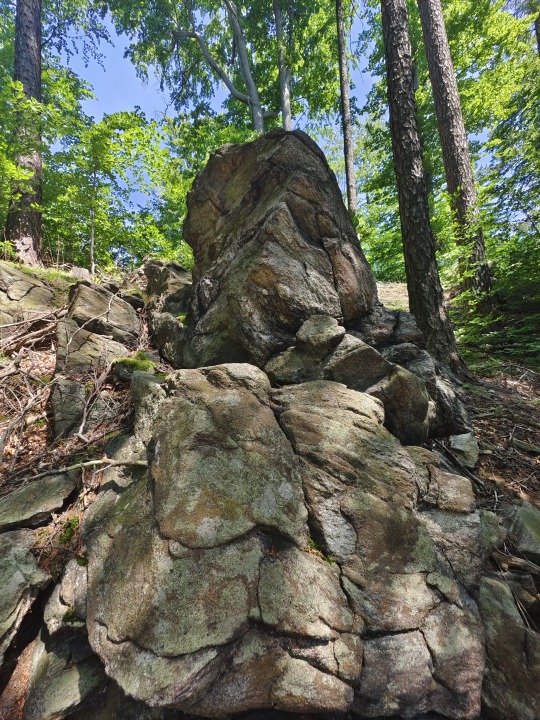
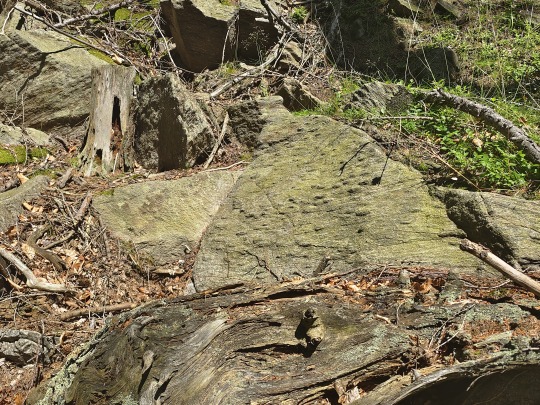

During my last trips to The Owl Mountains I found this handsome gneiss rock formation hidden in the forest on a nameless culmination.
12 notes
·
View notes
Photo
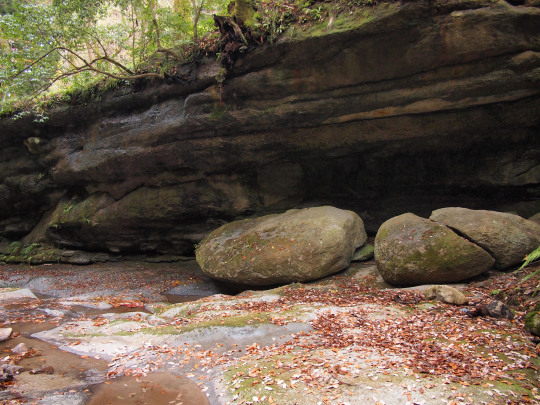
Layered sandstone beds of a Miocene age (15 million yrs ago).
156 notes
·
View notes
Text
Murgonornis archeri Worthy et al., 2023 (new genus and species)
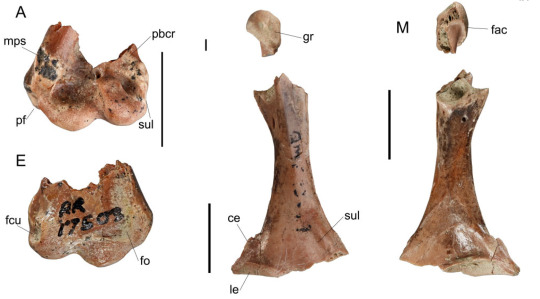
(Partial humerus [upper arm bone; A and E] and coracoid [shoulder bone; I and M] of Murgonornis archeri [scale bars = 10 mm], from Worthy et al., 2023)
Meaning of name: Murgonornis = Murgon bird [in Greek]; archeri = for Michael Archer [Australian paleontologist]
Age: Eocene (Ypresian), about 54.6 million years ago
Where found: Oakdale Sandstone, Queensland, Australia
How much is known: About a dozen limb bones. It is unknown whether any of these bones belonged to the same individuals, but more than one individual is almost certainly represented.
Notes: Murgonornis was a presbyornithid, a group of long-legged extinct birds closely related to ducks and geese. Several specimens of Murgonornis (including the type specimen) had been previously described in 1999, but were left unnamed at the time. Back then, these fossils were considered to belong to shorebirds; however, a close resemblance to presbyornithids (which have long been recognized as having shorebird-like features) was acknowledged as well. A new study not only names these specimens, but also supports their identification as presbyornithids.
Presbyornithids were widely distributed during the Eocene, having been previously reported from Eocene fossil sites in North and South America, Asia, and Africa. Murgonornis confirms that these birds were present in Australia as well during this time. Prior to this new study, the only Australian presbyornithid known was the Oligocene–Miocene Wilaru, the youngest presbyornithid discovered so far.
Reference: Worthy, T.H., V.L. De Pietri, R.P. Scofield, and S.J. Hand. 2023. A new Eocene species of presbyornithid (Aves, Anseriformes) from Murgon, Australia. Alcheringa advance online publication. doi: 10.1080/03115518.2023.2184491
27 notes
·
View notes
Photo
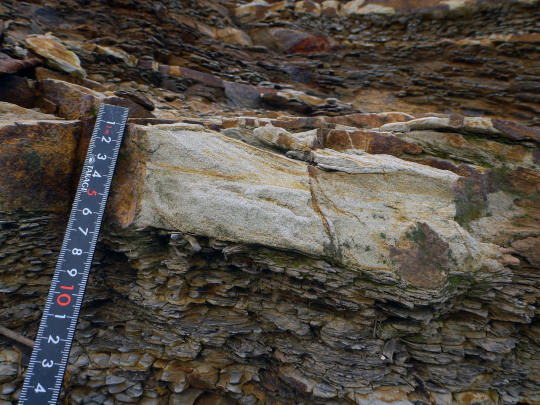
Deep marine sandstone of a Miocene age, showing the Bouma Sequence. 砂岩
54 notes
·
View notes
Text
Migmatite outcrop in Bystrzyca Górna



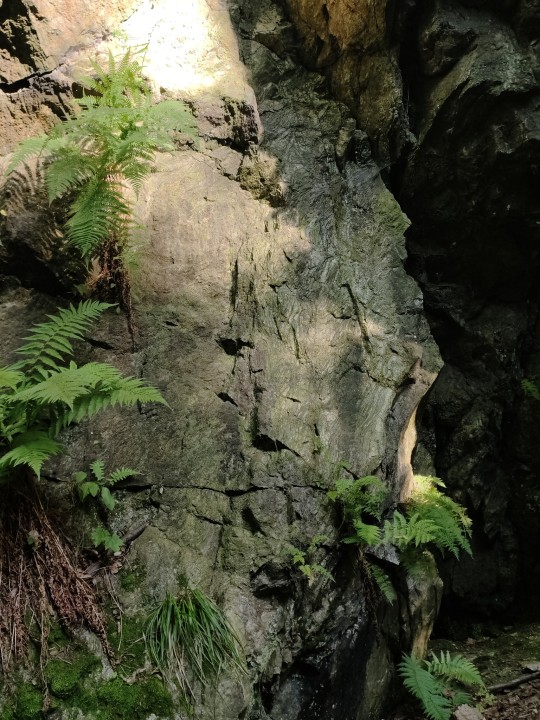

#geology#lower silesia#geotourism#poland#geologia#Góry Sowie#Sudety#geology of lower silesia#metamorphic#rocks
10 notes
·
View notes
